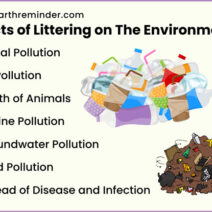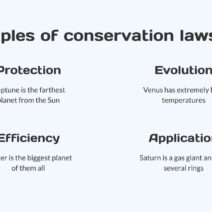The specter of climate change looms over humanity like a colossal, unyielding storm cloud, threatening to unleash devastation upon our ecosystems, economies, and societies. As we navigate this tempest, the role of governments becomes paramount in steering collective action toward sustainability. With the right policy frameworks in place, governments can either be the lighthouse guiding us through turbulent waters or the anchor that drags us into the abyss of inaction. Thus, the question arises: how can governments effectively tackle the intricate tapestry of climate change? This exploration delves into the myriad ways in which policy can be implemented in action.
At the very core of governmental action lies the principle of regulation. Governments possess the unique ability to impose rules and standards that compel industries to reduce carbon emissions, adopt renewable energy sources, and invest in sustainable practices. By establishing stringent regulations—akin to a conductor orchestrating a symphony—governments can ensure that all players in the economy harmonize toward a common goal: mitigating climate change. For instance, the introduction of cap-and-trade systems has enabled various sectors to curb their emissions while fostering innovation. Such policies, like a carefully laid railway track, guide industries toward a greener, low-carbon future.
In addition to regulation, governments can play a pivotal role in incentivizing the transition toward greener technologies. Financial instruments—such as subsidies for renewable energy projects or tax breaks for energy-efficient appliances—function like the wind beneath the wings of innovation. These incentives encourage businesses to explore sustainable avenues while simultaneously reducing the financial burden on consumers. The development of renewable energy sources—solar, wind, and bioenergy—speaks volumes of successful governmental support. When governments allocate resources toward these initiatives, they invoke an ecosystem of growth, where progress flourishes like wildflowers after a spring rain.
Public investment is another critical avenue through which governments can manifest their commitment to combating climate change. By funding research and development for clean technologies, governments not only stimulate economic growth but also contribute to the global repository of knowledge. This investment is akin to planting seeds in fertile soil; as these ideas germinate, they hold the potential to alter the landscape of our energy consumption and production fundamentally. Furthermore, infrastructural development in urban environments—transforming cities into green, resilient hubs—can bolster this initiative. By ensuring that public transport, buildings, and utilities are designed with sustainability in mind, governments can create spaces that are conducive to low carbon living.
Adapting to climate change is just as important as mitigating its ferocity. Governments must adopt policies that enhance resilience to climate-related impacts—floods, hurricanes, and droughts—especially in vulnerable communities. Developing comprehensive disaster response frameworks is akin to crafting a safety net for society. By investing in early warning systems, flood defenses, and sustainable land-use practices, governments can protect communities from devastation while simultaneously fostering a culture of preparedness. Localized initiatives, such as community gardens or green roofs, can serve as a buffer against extreme weather events, illustrating that these policies work not just on a macro scale but at the grassroots level as well.
Public engagement and education are indispensable components of the climate change policy toolkit. Governments have a unique platform from which they can promote awareness and inspire action among their citizenry. Campaigns that elucidate the science of climate change and its dire effects can cultivate an informed populace, stirring individuals into action as advocates for sustainability. It is crucial that governments not only disseminate information but also listen to the voices of citizens, especially marginalized groups most affected by climate change. This dialogue can transform policy-making from a top-down approach into a collaborative effort, empowering citizens to advocate for policies that resonate with their local contexts.
International collaboration also underpins effective government action against climate change. As a global challenge, climate change transcends national borders, necessitating collective efforts and shared solutions. Through international treaties and agreements—such as the Paris Agreement—governments can unite in their resolve to limit global warming and reduce carbon emissions. Such alliances foster a climate of trust and shared responsibility, much like the interconnectedness of a vast network of roots beneath a forest floor, sustaining growth and resilience among all trees.
While the path ahead is fraught with challenges, innovative policies can produce a mosaic of transformative change. Climate finance is one such innovative avenue, where developed nations can commit financial resources to support developing countries in their efforts to tackle climate development challenges. This financial support serves as the lifeblood for projects that might otherwise remain dormant, much like the surge of nutrients that revitalizes a parched land.
In conclusion, governments have the capacity to wield transformative power in the fight against climate change. Through regulation, incentives, public investment, disaster preparedness, education, international collaboration, and climate finance, they can enact policies that not only mitigate environmental degradation but also foster resilience and adaptation. As moving through turbulent waters necessitates a sturdy ship that can weather storms, effective governmental action creates the robust framework required to confront climate change with determination and resolve. It is a clarion call for all governments to recognize their pivotal role in this global endeavor, to navigate through the complexities of climate change, and to emerge as champions of a sustainable future, where the environment thrives alongside human progress.





